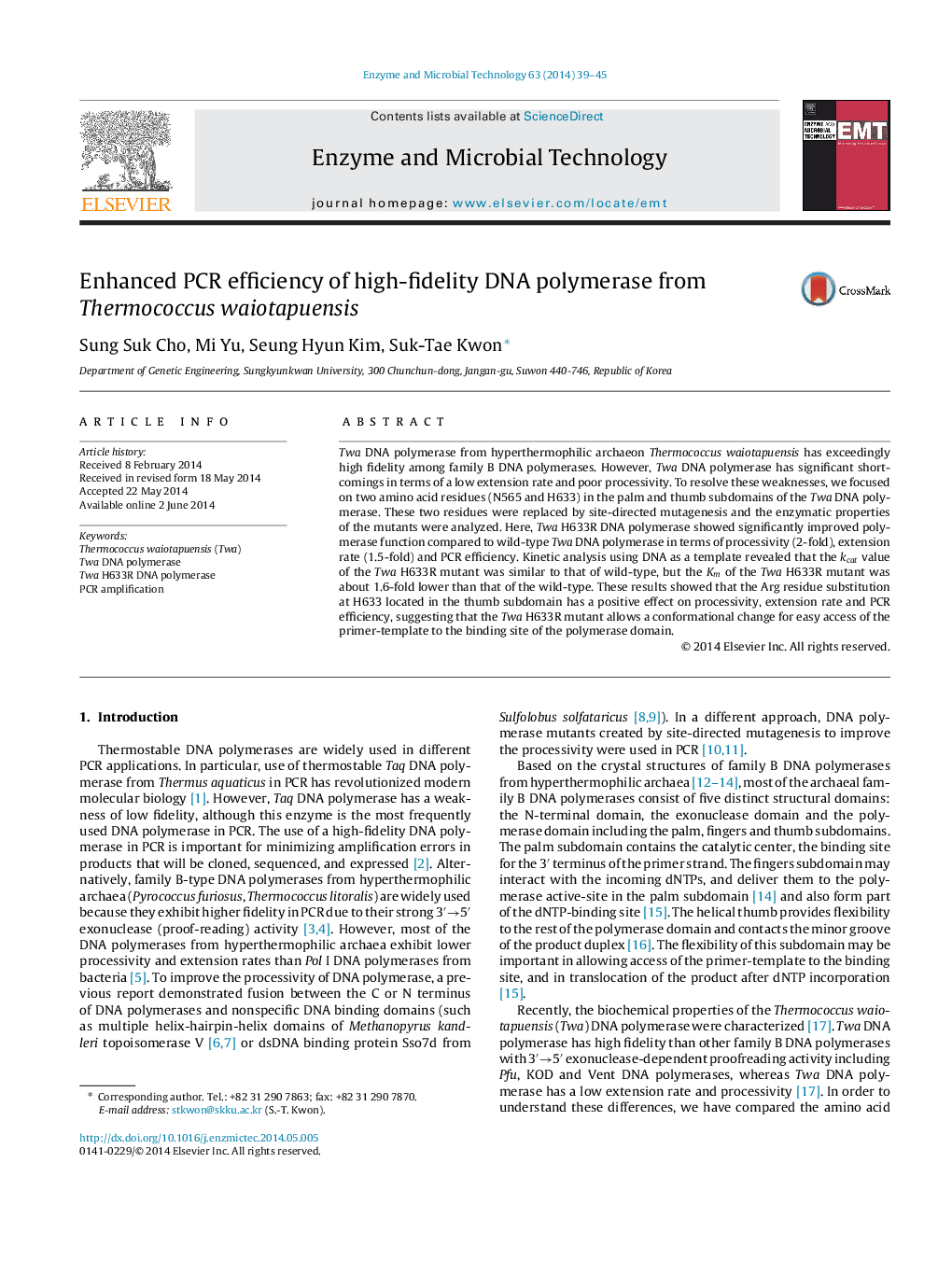| Article ID | Journal | Published Year | Pages | File Type |
|---|---|---|---|---|
| 17166 | Enzyme and Microbial Technology | 2014 | 7 Pages |
•We created mutant Twa H633R DNA polymerase using site-directed mutagenesis.•Twa H633R mutant showed an improved processivity compared to wild-type.•Twa H633R mutant showed an improved extension rate compared to wild-type.•Twa H633R mutant showed an improved PCR efficiency without the loss of fidelity.
Twa DNA polymerase from hyperthermophilic archaeon Thermococcus waiotapuensis has exceedingly high fidelity among family B DNA polymerases. However, Twa DNA polymerase has significant shortcomings in terms of a low extension rate and poor processivity. To resolve these weaknesses, we focused on two amino acid residues (N565 and H633) in the palm and thumb subdomains of the Twa DNA polymerase. These two residues were replaced by site-directed mutagenesis and the enzymatic properties of the mutants were analyzed. Here, Twa H633R DNA polymerase showed significantly improved polymerase function compared to wild-type Twa DNA polymerase in terms of processivity (2-fold), extension rate (1.5-fold) and PCR efficiency. Kinetic analysis using DNA as a template revealed that the kcat value of the Twa H633R mutant was similar to that of wild-type, but the Km of the Twa H633R mutant was about 1.6-fold lower than that of the wild-type. These results showed that the Arg residue substitution at H633 located in the thumb subdomain has a positive effect on processivity, extension rate and PCR efficiency, suggesting that the Twa H633R mutant allows a conformational change for easy access of the primer-template to the binding site of the polymerase domain.
